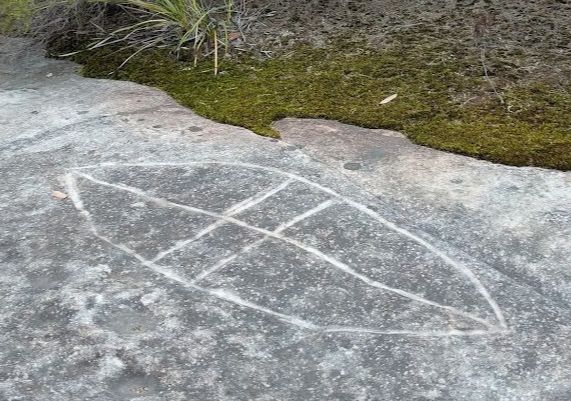In October, Matt Poll, Manager of Indigenous Programs at the Australian National Maritime Museum, spoke on Sydney’s Aboriginal history as part of the First Nations Speaker Series. This series, which began as a collaboration between GML Heritage and the ANU Research Centre for Deep History, now also involves Sydney Living Museums who hosted the presentation in the Gold Melting Room at the NSW Mint. In his talk, Poll painted a picture of Sydney’s deep human history and heritage across several thousand years, and illustrated that these rich and diverse cultural expressions are not so much relics of the deep past but are alive today.
The material traces of First Nations peoples are everywhere around the city, including the thousands of rock art sites, some of which include several hundred motifs and extend back over many tens of thousands of years. This, Poll told us, makes the east coast of Australia an extensive and extraordinary outdoor art gallery. Yet, making meaning of this gallery requires interpretive work. The expertise of First Nations Elders, artists, researchers, and archaeologists is needed to help develop a fuller, equitable and more accurate sense of Sydney and Australia’s history.
As Poll highlighted, while these tangible traces hold different meanings for different people, meaning can be understood more broadly. Quoting Yirrkala artist and leader, Wandjuk Marika on the sandstone engravings in Ku-Ring-Gai Chase national park, Poll said: ‘There is no-one who can properly say why this whale or that boomerang was carved in the rock, or whether his whale is a natural whale or a supernatural whale, or even whether this shape was meant to signify any kind of whale at all. All that the living can be absolutely sure of is that the stone records were made because certain knowledge inspired their creation at different times. They became a source of inspiration themselves, and now they inspire peoples unknown to the artists and even undreamt by them.’ By discerning the broad inspiration of the original artists many thousands ago, the engravings can be understood as representing a deep and enduring knowledge of, and connection to, Country. Today, people can connect with knowledge and culture, like the artists before them, by working with the engravings, reproducing them, transforming them, and through that practice, engaging Country itself .
For many in the audience, Poll’s compelling talk illuminated the breadth of projects that are articulating Sydney’s Aboriginal past in the public realm. Using a range of case studies, he presented the diverse approaches First Nations artists and researchers are taking to incorporate these pasts into cultural institutions. This includes Gadigal elder Charles Madden’s work in adopting motifs found in rock engravings and inscribing them on shields, transposing them into contemporary art objects now held at the Australian Museum. This process involved working through protocols of access and permission to select and work with bark and colour, demonstrating a reclamation and reimagining of rock art motifs.
Similarly, Waanyi artist Judy Watson’s planned installation of a monument titled Bara takes the well-worked shape and design of a Sydney-region fish-hook and translates it into marble. This is not just a transformation of form, but also speaks to the knowledge with which this material trace of history can be understood. Through translating an object found in shell middens—otherwise classified as an artefact for archaeologists to work with—into a public art project, Watson is creating a monument to the Eora that will inscribe Dubbagullee/Bennelong Point as a place of gathering and abundance that recognises the deep connection of Gadigal people to Country.
These artistic practices are developed through a range of creative engagements with Country, with cultural knowledges, and with deep history and heritage. Poll described them as translations and as interpretations and re-creations of places and objects. This conveys an important sense of the way they work by translating both the past and the knowledges that represent and connect that past with the present, bridging the conceptual gulf between the deep past and the present and working to reimagine dominant narratives. These transposed and translated histories and heritages do not just add to knowledge, but rather transform the terms of our historical knowledge. The artistic works Poll shared with us are not, in other words, translations that render Indigenous knowledges transparently available to non-Indigenous people; rather they are engagements that generate and expand spaces of cultural potential.
Translation here is a bridge between cultures or languages, expressing that bridge as a site of meaning-making on a continuum of transformations. It does not convey or define original meaning, as Wandjuk Marika cautioned against above. It rather offers a glimpse of a new or different world. The First Nations artistic works that Poll described, each of which references and works with traces from the past, are engagements with Country that ‘re-energise’ and ‘re-awaken’ the Sydney landscape and create ‘social spaces where the Aboriginal past is activated and brought into the present’. This has something to offer us all.


